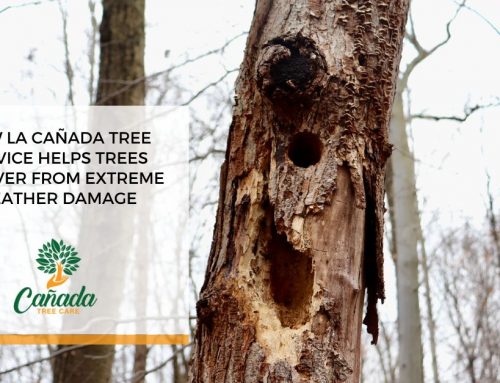Trees are essential components of our natural environment, providing shade, oxygen, and a sense of tranquility. However, as all the experts at Cañada Tree Care know very well, not all trees are created equal, and some may pose risks due to diseases, decay, or structural issues. Being able to identify potential dangers is crucial for the safety of both property and people. Here are three key tips for spotting a dangerous tree based on signs in the leaves, branches, and trunk.
How To Spot A Dangerous Tree According To Cañada Tree Care
Signs In The Leaves
Observing the leaves of a tree can provide valuable insights into its overall health. Changes in color, size, and texture can be indicators of potential issues. One common sign of distress is premature leaf drop or discoloration. If a tree is losing its leaves at an unusual rate, or if the leaves are displaying an abnormal color, it may be a sign of disease or stress. Additionally, the presence of fungal growth on leaves can signal decay within the tree.
Inspecting for pest infestations is another aspect of leaf examination. Certain pests can weaken a tree’s defense mechanisms, making it more susceptible to diseases and structural problems. Holes, unusual patterns, or the presence of pests themselves on the leaves can be indicative of an infestation.
Signs In The Branches
The branches of a tree provide valuable information about its structural integrity. One key indicator of potential danger is the presence of dead or decaying branches. These weakened branches can become brittle and pose a significant risk of falling, especially during storms or high winds. Cracks, splits, or areas with missing bark are also warning signs of underlying problems.
The branch structure is equally important. Trees with an uneven distribution of branches or an unbalanced canopy may be more prone to breakage. Leaning branches or those with abnormal angles may suggest structural weakness and could be at risk of falling. Regularly inspecting your trees for these signs can help identify potential risks before they escalate.
Signs In The Trunk
The trunk serves as the tree’s central support system, and any issues here can have severe consequences. Cracks or cavities in the trunk are red flags, indicating potential decay or structural compromise. If a tree has a visible lean, it might be an indication of root issues or instability. A swollen base or mushrooms growing at the base of the tree are signs of decay, as they often result from the breakdown of internal wood tissues.
Inspecting the trunk for signs of damage or abnormal growth is essential for assessing a tree’s overall health and stability. If there are signs of trunk issues, it’s advisable to seek professional arborist guidance to determine the best course of action, whether it involves pruning, cabling, or removal.
If you recognize any of these signs in your trees, and think that professional assistance might be needed, then don’t hesitate to give us a call at Cañada Tree Care. We are ready and waiting to take on your case and solve all of your tree-related issues as soon as possible!







Leave A Comment